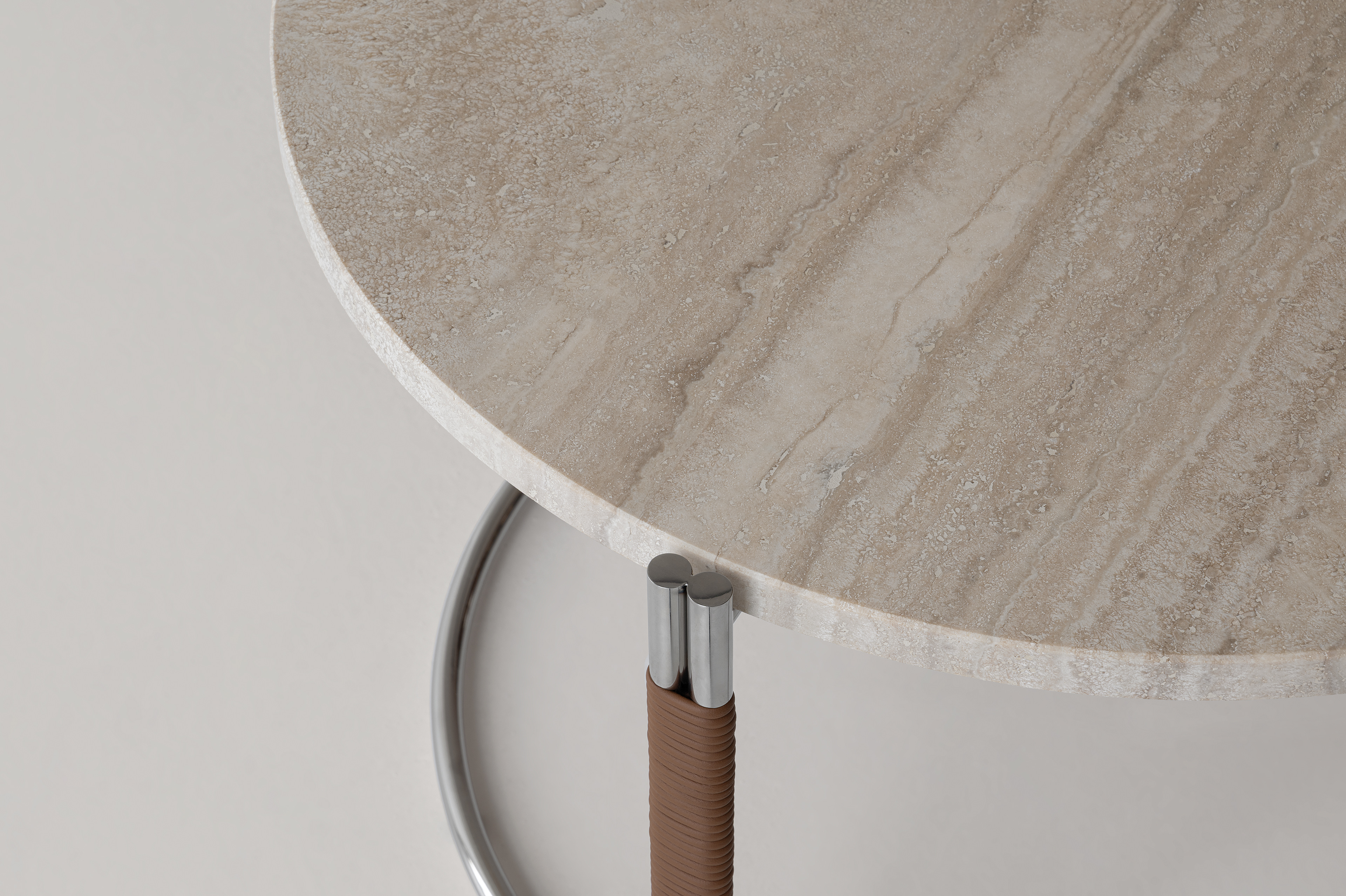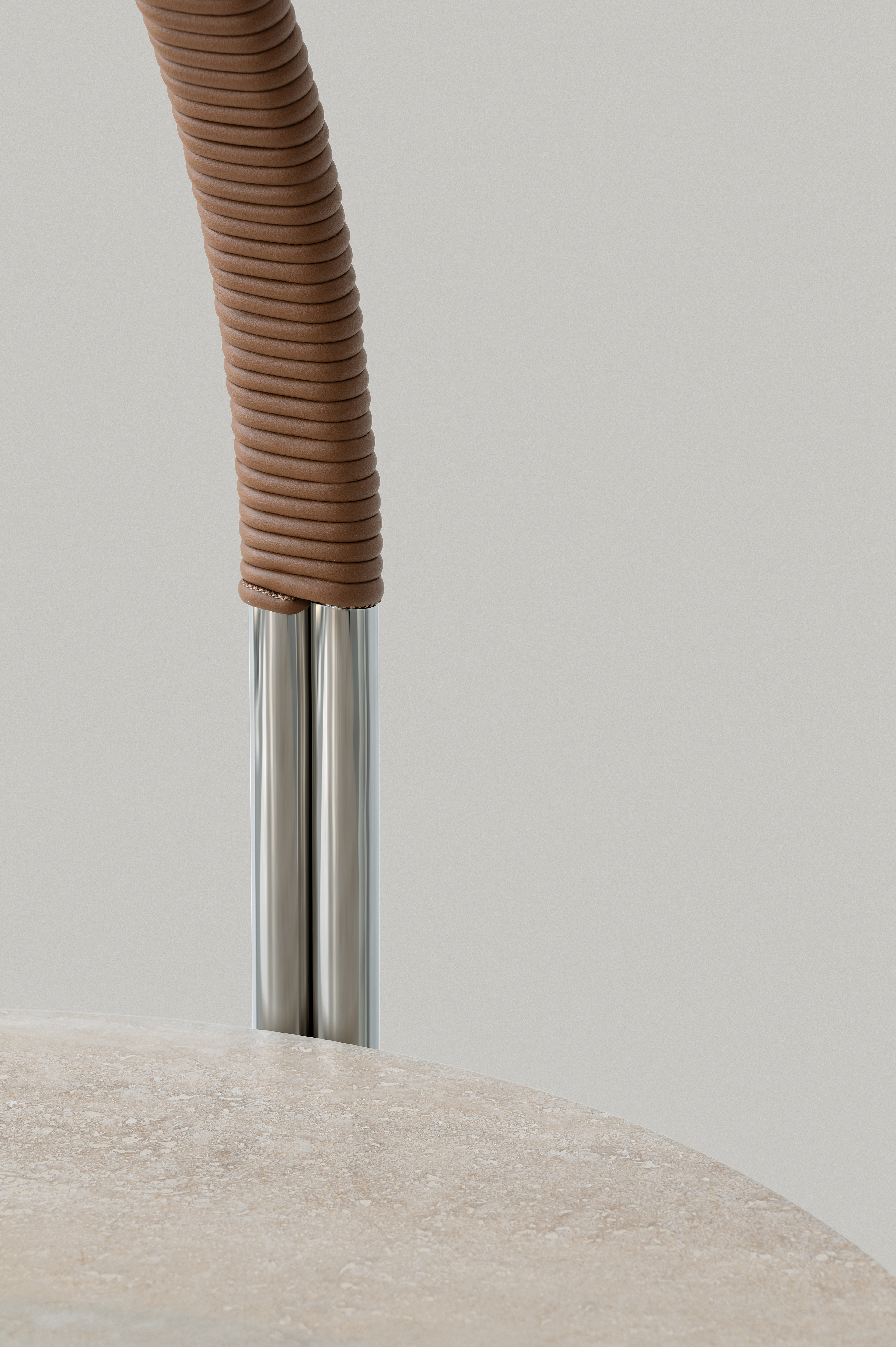arch. luca erba
A furniture piece within a broader collection must, above all, convey consistency with the brand. Un prodotto d’arredo contestualizzato all’interno di una collezione più ampia, deve trasmettere, prima di tutto, coerenza con il brand.
“Simplicity is resolved complexity”
When we speak of a furniture piece within the context of a broader collection, it must first and foremost convey consistency with the brand. It should both reassure and surprise — evoking cultural and stylistic heritage while also expressing its own personality. Lastly, it should convey simplicity. I often like to recall Constantin Brâncuși’s statement: “Simplicity is complexity resolved.” Se parliamo di un prodotto d’arredo contestualizzato all’interno di una collezione più ampia, deve trasmettere, prima di tutto, coerenza con il brand. Inoltre deve rassicurare e sorprendere. Quindi deve riportarci alla memoria eredità culturali e stilistiche ma allo stesso tempo avere personalità. Per ultimo, deve trasmettere semplicità. Mi piace ricordare spesso l’assunto di Constantin Brâncuși: “La semplicità è una complessità risolta”.
Sometimes there is a need or a curiosity to experiment with a particular material, and the creative process is sparked by the characteristics and opportunities that the material itself offers. Other times, the form or more broadly, the function is the starting point, and the choice of material follows as a consequence, guided by architectural and structural logic. A volte c’è la necessità o la curiosità di sperimentare un particolare materiale e il processo creativo nasce dalle caratteristiche e opportunità che ci offre esso stesso. Altre volte la forma o comunque la funzione è il punto di partenza e la scelta del materiale è una conseguenza dettata da logiche architettoniche e costruttive.
Samoa table
Inspired by the principles of purist art and architecture, the Samoa table presents itself as a true piece of micro-architecture. The design is defined by essential lines, clean volumes, and the absence of superfluous decoration. Pure forms and soft curves create shadow play that gently traces the leather-clad surfaces of the base. The top, crafted in wood or stone-effect ceramic, introduces a tactile quality that contrasts with the minimal elegance of the forms, creating a harmonious dialogue between material and volume. Ispirato ai principi dell’arte e dell’architettura purista, il tavolo Samoa si presenta come una vera e propria micro architettura. Il progetto si caratterizza per linee essenziali, volumi definiti e l’assenza di decorazioni superflue. Le forme pure e le curve morbide generano giochi di ombre che disegnano delicatamente le superfici in cuoio della base. Il top, realizzato in legno o ceramica effetto pietra, aggiunge una qualità tattile che contrasta con l’eleganza minimale delle forme, creando un dialogo armonioso tra materia e volume.
The territory — understood not only as a physical space but also as a cultural and historical context — plays a fundamental role in the creation of projects that are truly meaningful and coherent. Projects that lack solid roots and a strong sense of belonging are often weak and short-lived. Il territorio, inteso non solo come spazio fisico ma anche come contesto culturale e storico, gioca un ruolo fondamentale nella creazione di progetti che siano veramente significativi e coerenti. I progetti che non hanno solide radici e un forte senso di appartenenza, spesso sono deboli ed effimeri.
Maori
With its essential and primordial appearance, the Maori coffee table series stands out for a bold joint that connects its structural elements. Like a mask resting on a face, two leather surfaces wrap around and support the circular top in wood or stone, while a solid wood crosspiece firmly locks and holds all the components together. The result is an object that evokes the strength and purity of primitive forms, while also enhancing the intrinsic value of each material. Dall’aspetto essenziale e primordiale, la serie di tavolini Maori si distingue per un macro-incastro che unisce gli elementi costitutivi. Come una maschera che si posa sul volto, due superfici in cuoio avvolgono e sorreggono il piano circolare in legno o pietra, mentre un traverso in legno massello tiene saldamente insieme e incastra tutti i componenti. Il risultato è un oggetto che richiama la forza e la purezza delle forme primitive, esaltando al contempo il valore intrinseco di ciascun materiale.
Otto
Two parallel tubular elements form a figure “8”, the defining symbol and namesake of the collection. The thin, lightweight metal lines sketch out slender structures in space, joined together by a leather cord that is meticulously hand-wrapped. In contrast to the lightness of the supporting frame, tops in stone or wood complete the piece. Due tubolari affiancati formano un “8”, segno distintivo e nome della collezione. Le linee sottili e leggere del metallo disegnano nello spazio esili strutture unite tra loro tramite una corda in cuoio che viene avvolta manualmente. In contrasto alla leggerezza della struttura portante piani in pietra o legno completano il prodotto.



“Essential lines, defined volumes, and the absence
of superfluous decoration”
of superfluous decoration”
Luca Erba is an Italian architect and designer engaged in an ongoing process of research and experimentation. Through the proposition of new design languages, he explores the relationship between stylistic heritage, imagined futures, and technological innovation. His work is defined by the use of materials and by a thoughtful gesture that shapes them—giving life to creations that hold memories, reflect a deep sensitivity to detail, and embody a desire to craft pieces that are both spontaneous and sophisticated. His philosophy closely aligns with Constantin Brâncuși’s assertion: “Simplicity is complexity resolved”, which represents the essence of his thinking and serves as a guiding principle in the conception of every piece. Founded in 2010, his studio operates across a range of scales, from interior design and architecture to product design. With a multidisciplinary approach, Luca Erba collaborates with global brands, publishers, and galleries, developing products and spaces that respond to the needs of contemporary living. Luca Erba è un architetto e designer italiano, impegnato in un continuo processo di ricerca e sperimentazione. Con la proposizione di nuovi linguaggi esplora il rapporto tra eredità stilistiche, futuri immaginati e innovazione tecnologica. I suoi progetti sono caratterizzati dall’uso della materia e da un gesto ragionato che la plasma, dando vita a creazioni che custodiscono memorie, riflettono una profonda sensibilità al dettaglio e incarnano la volontà di realizzare prodotti spontanei, ma sofisticati. La sua filosofia si rapporta pienamente all’assunto di Constantin Brâncuși: “La semplicità è una complessità risolta”, che rappresenta l’essenza del pensiero e guida all’ideazione di ogni manufatto. Fondato nel 2010, lo studio esplora diverse scale progettuali, dal design d’interni all’architettura, fino al product design. Con un approccio multidisciplinare, Luca Erba collabora con brand globali, editori e gallerie, sviluppando prodotti e spazi che riflettono le esigenze dell’abitare contemporaneo.
